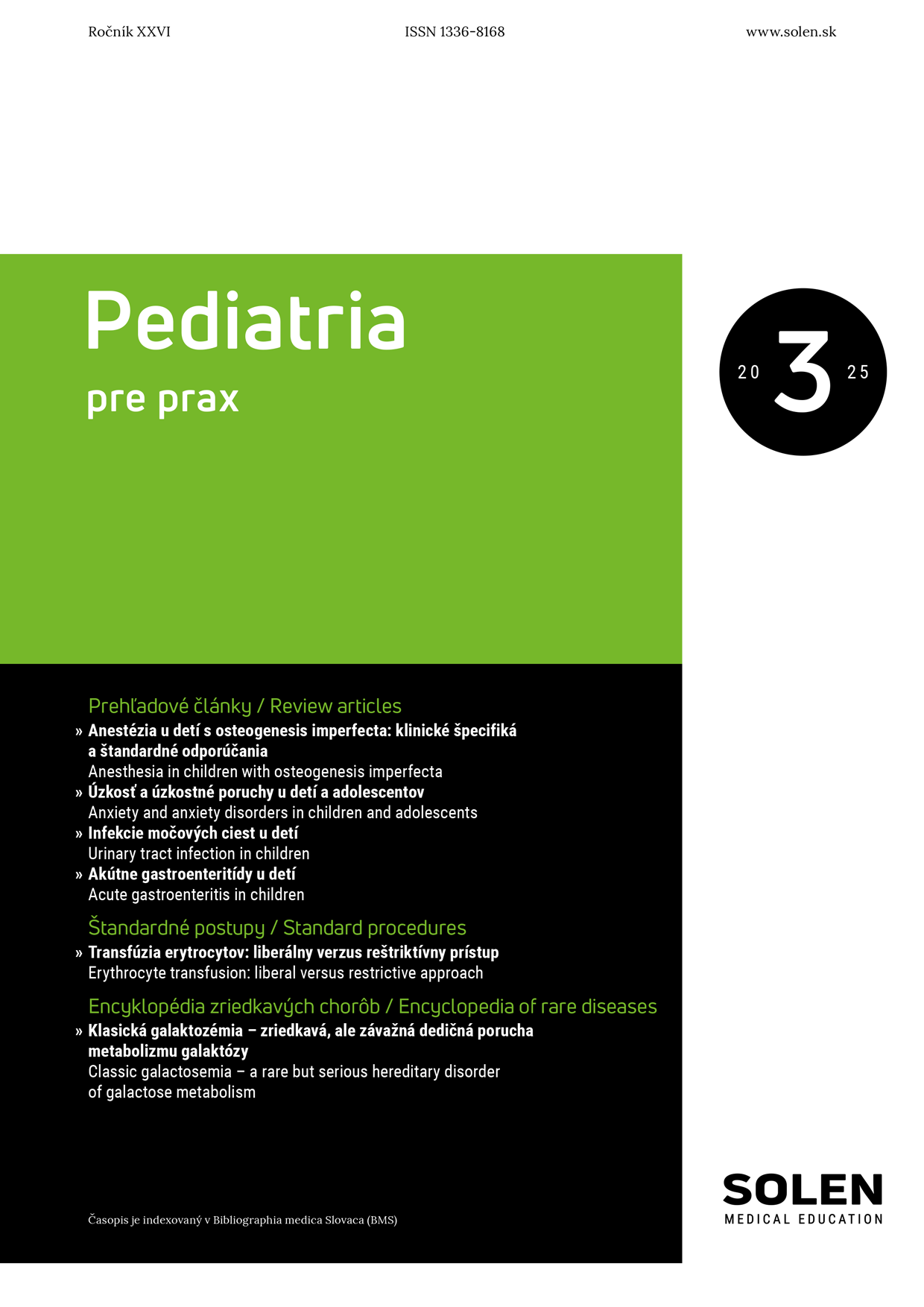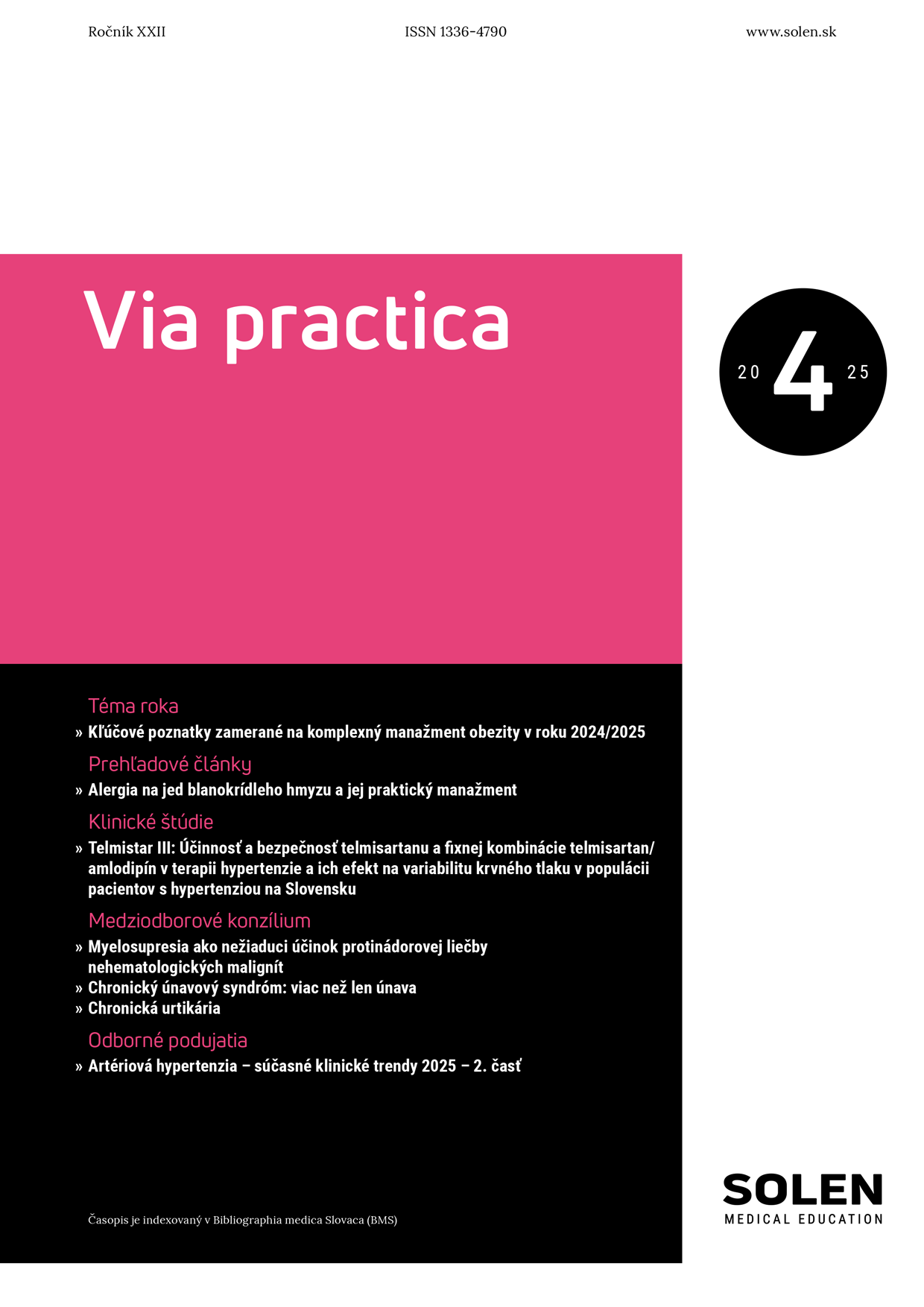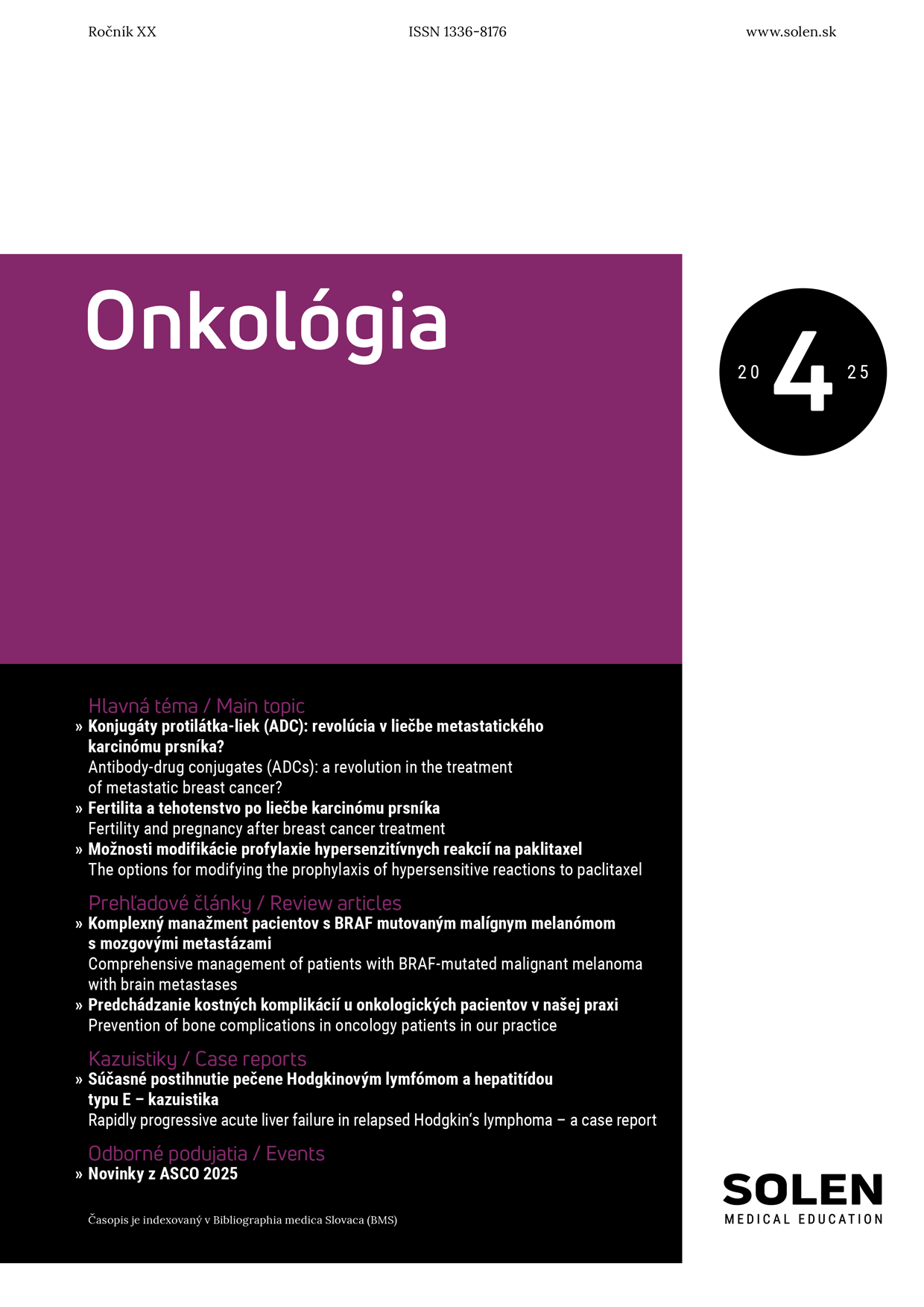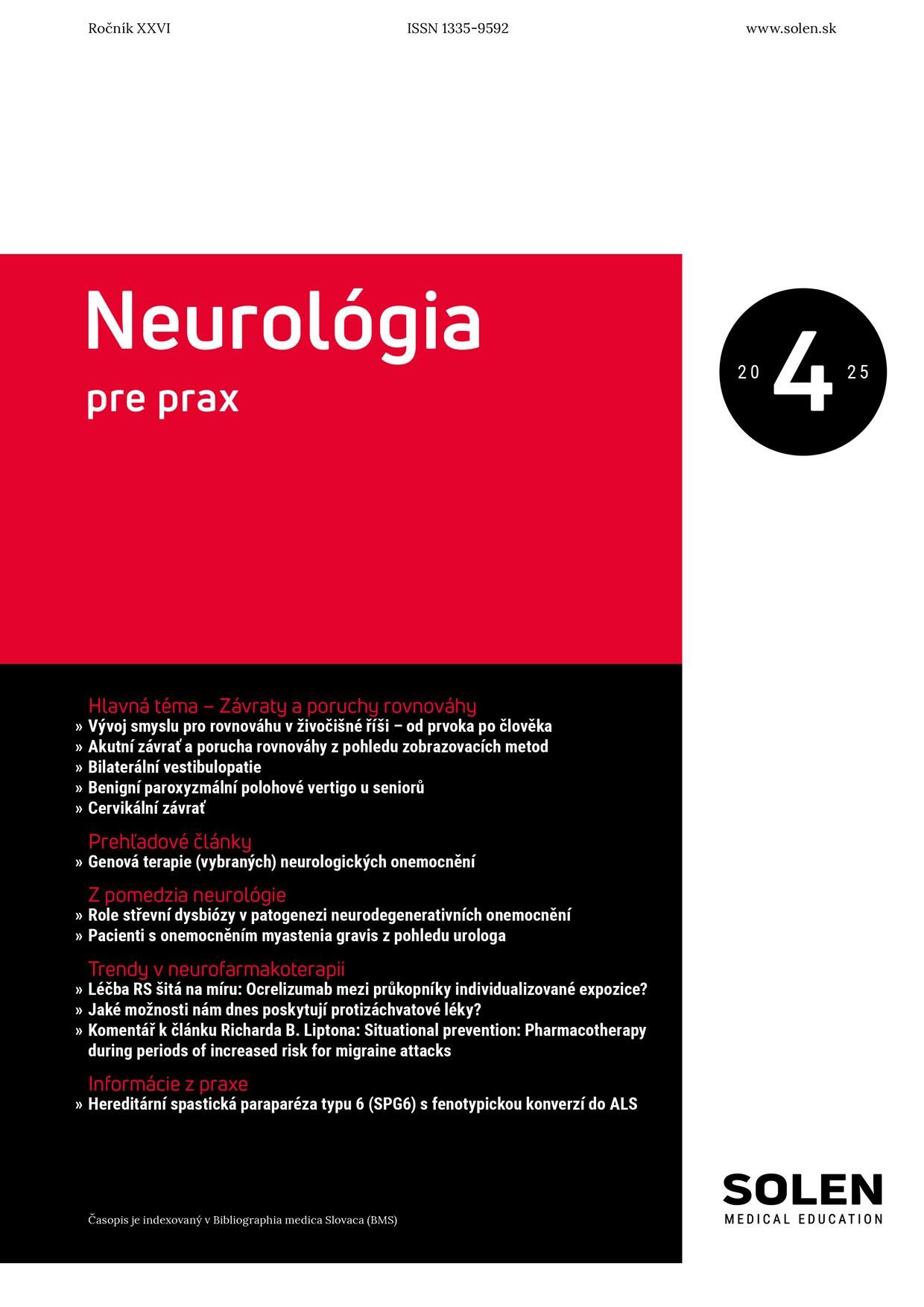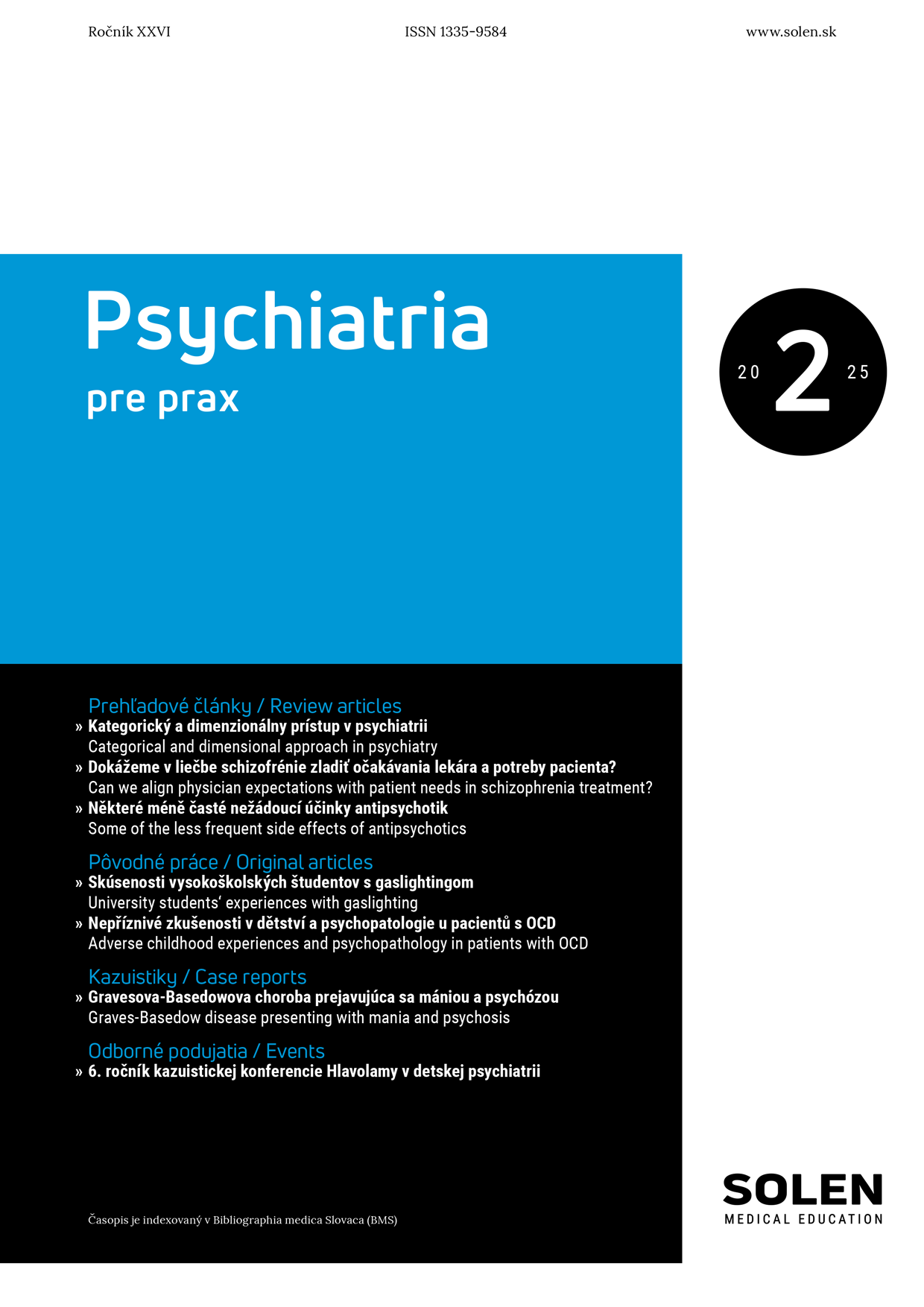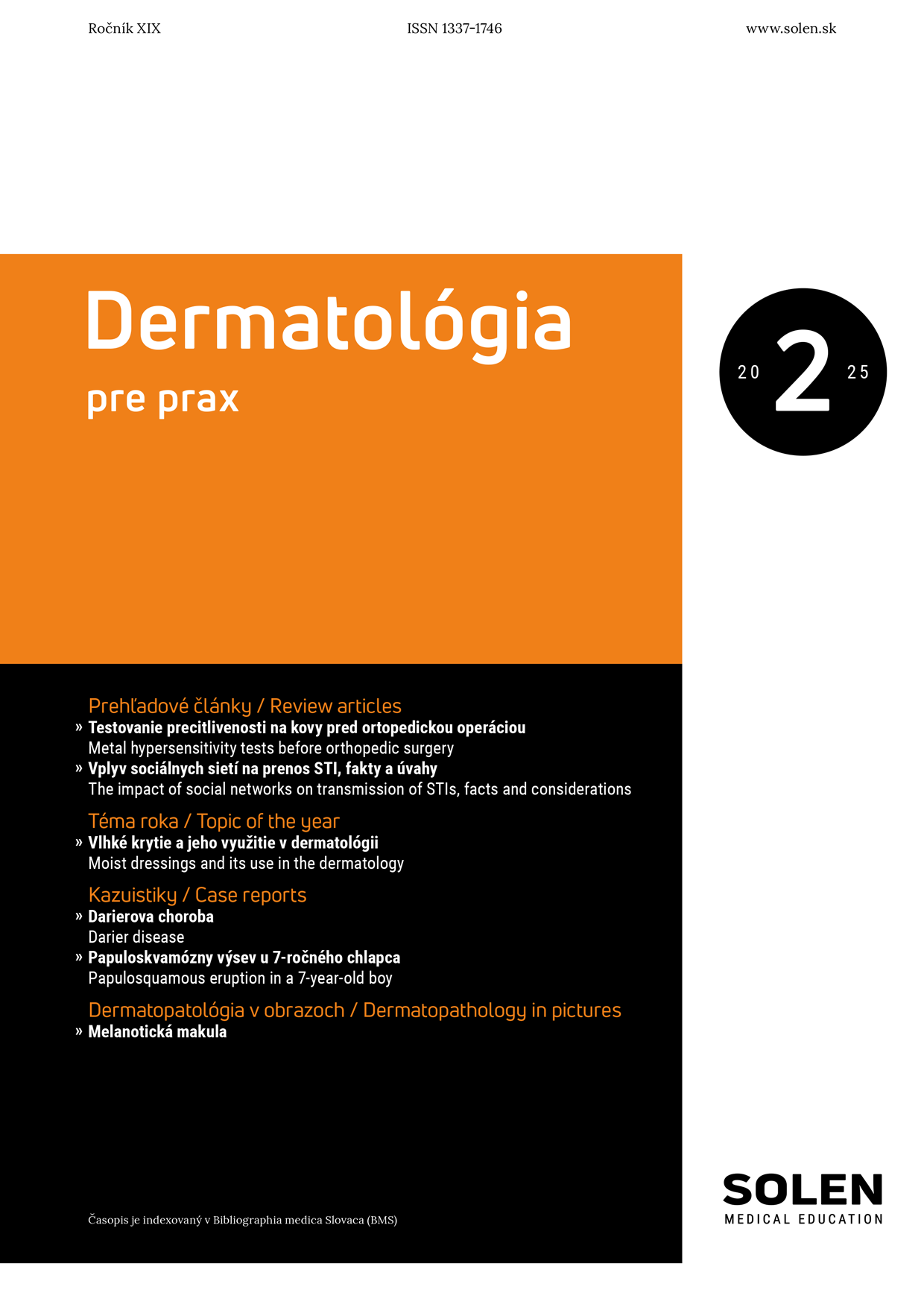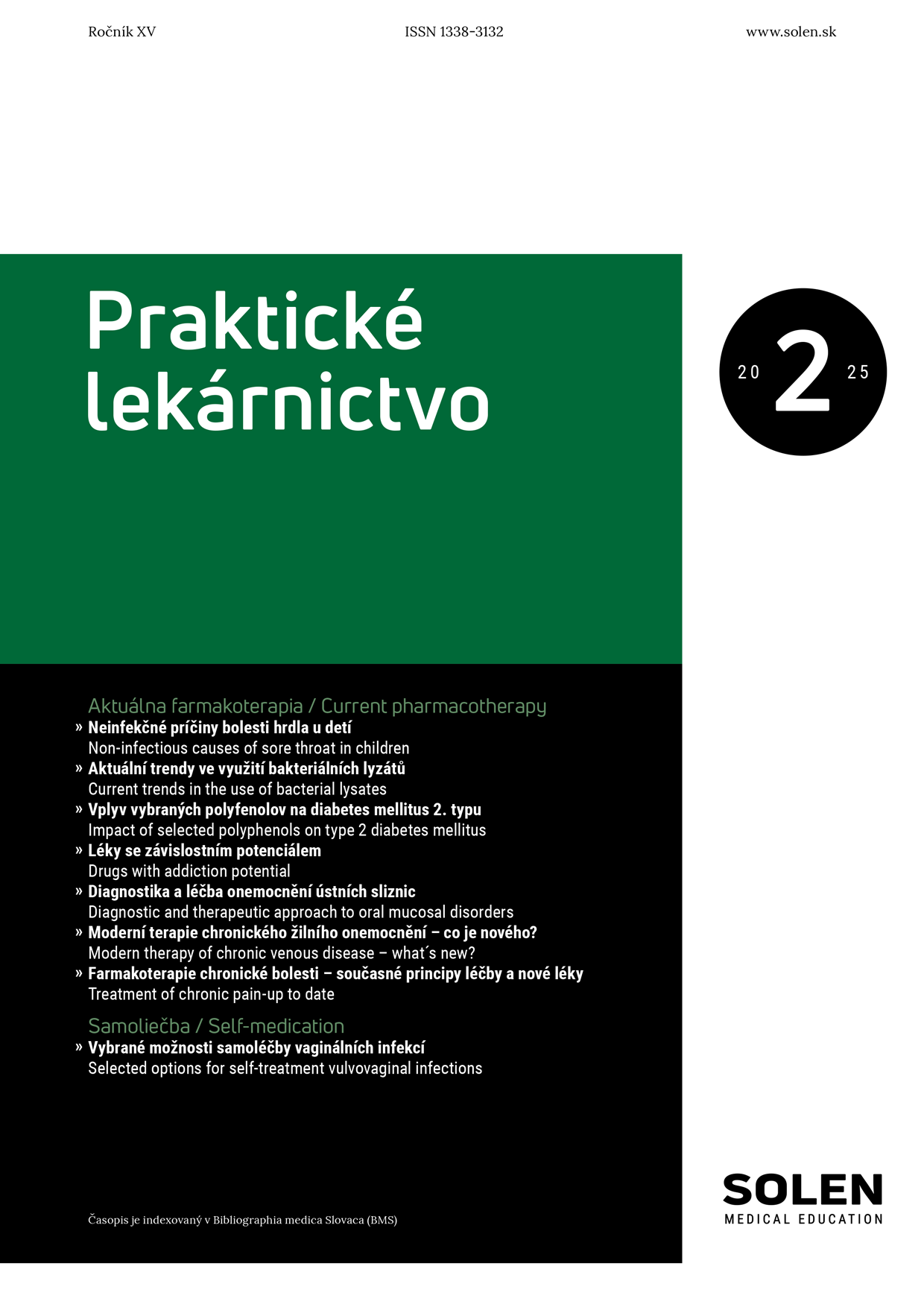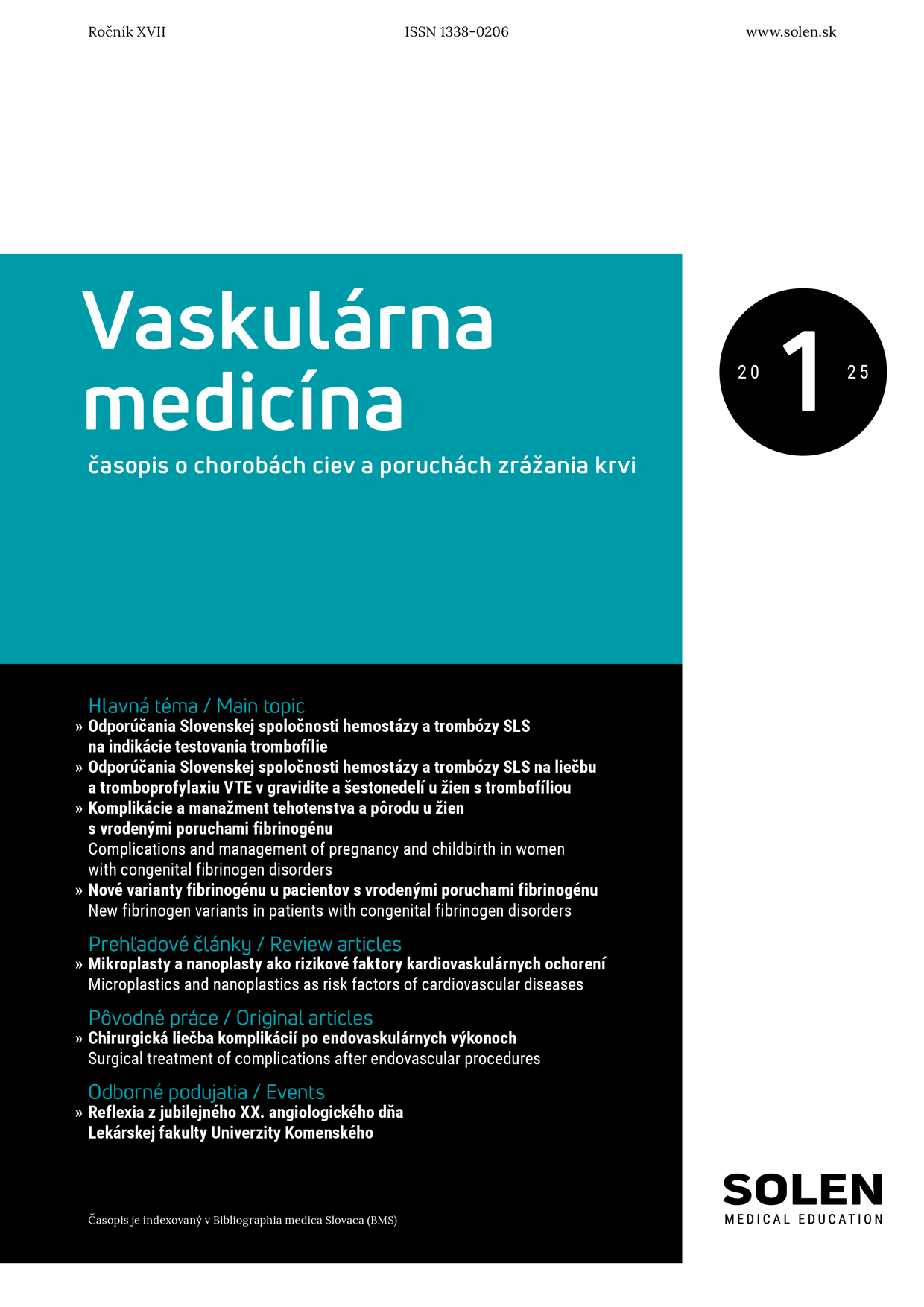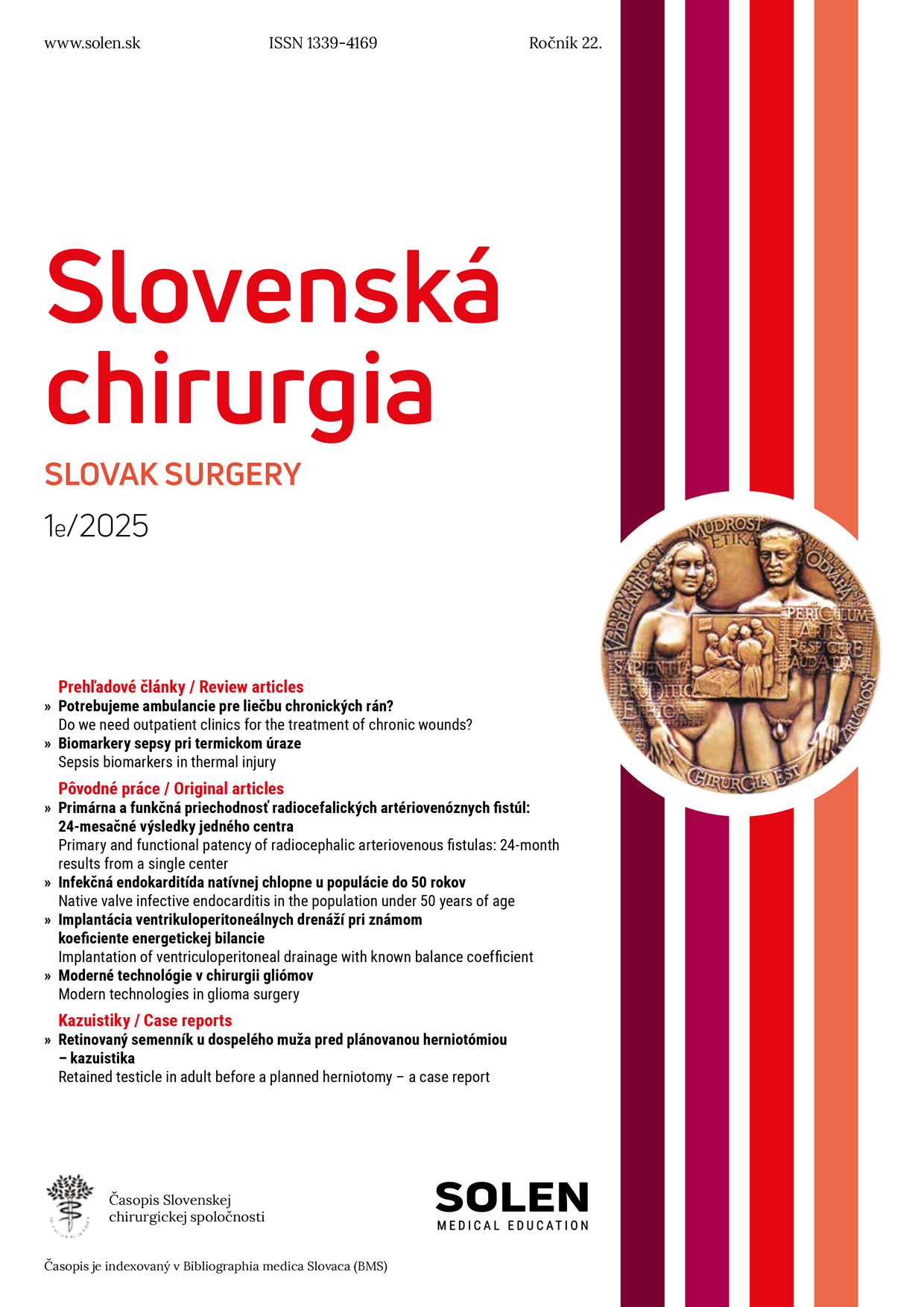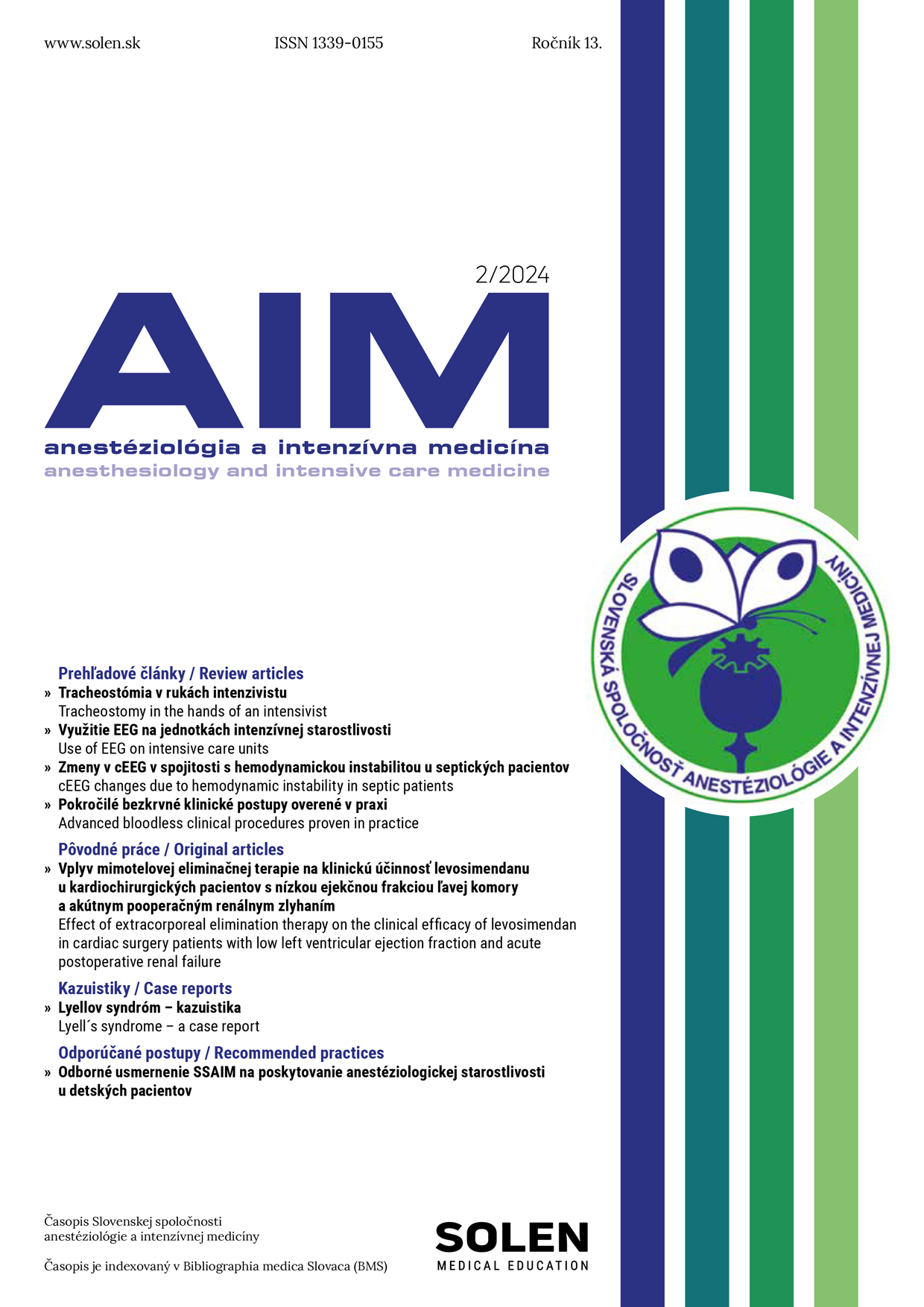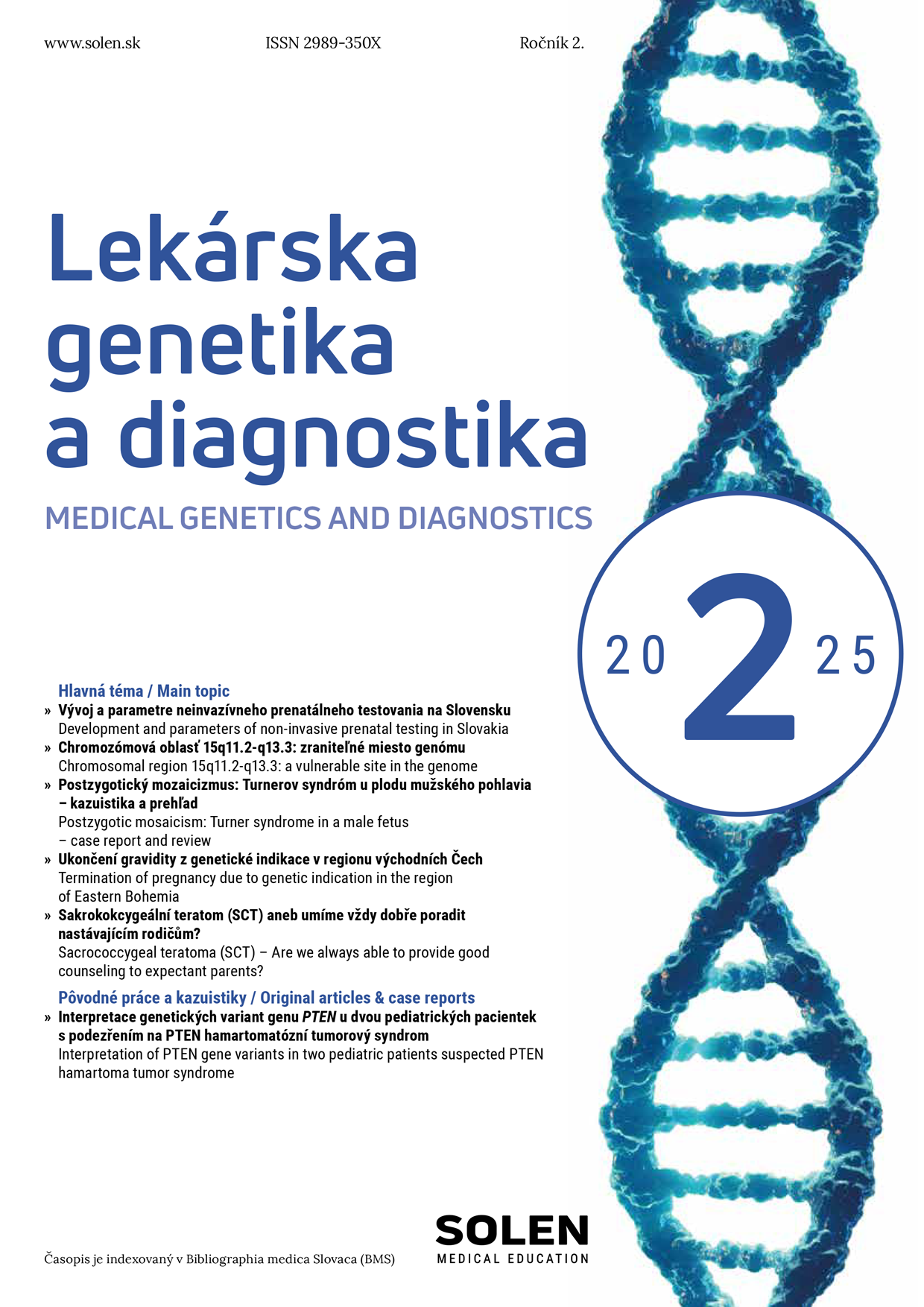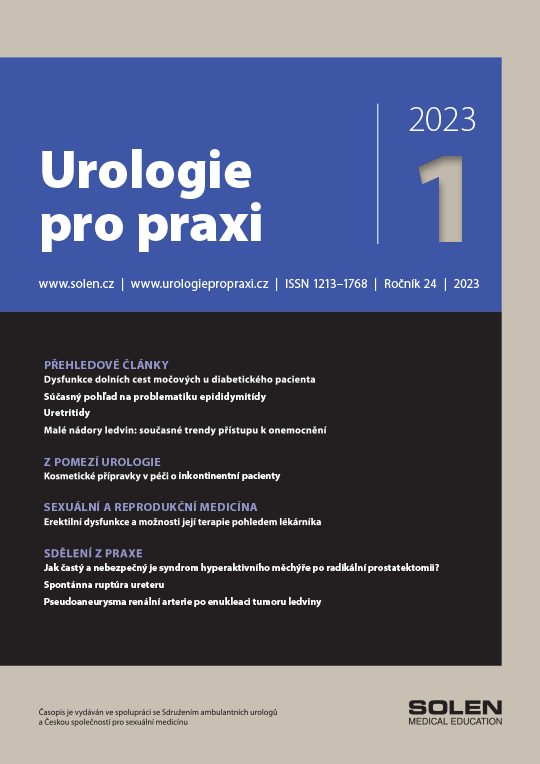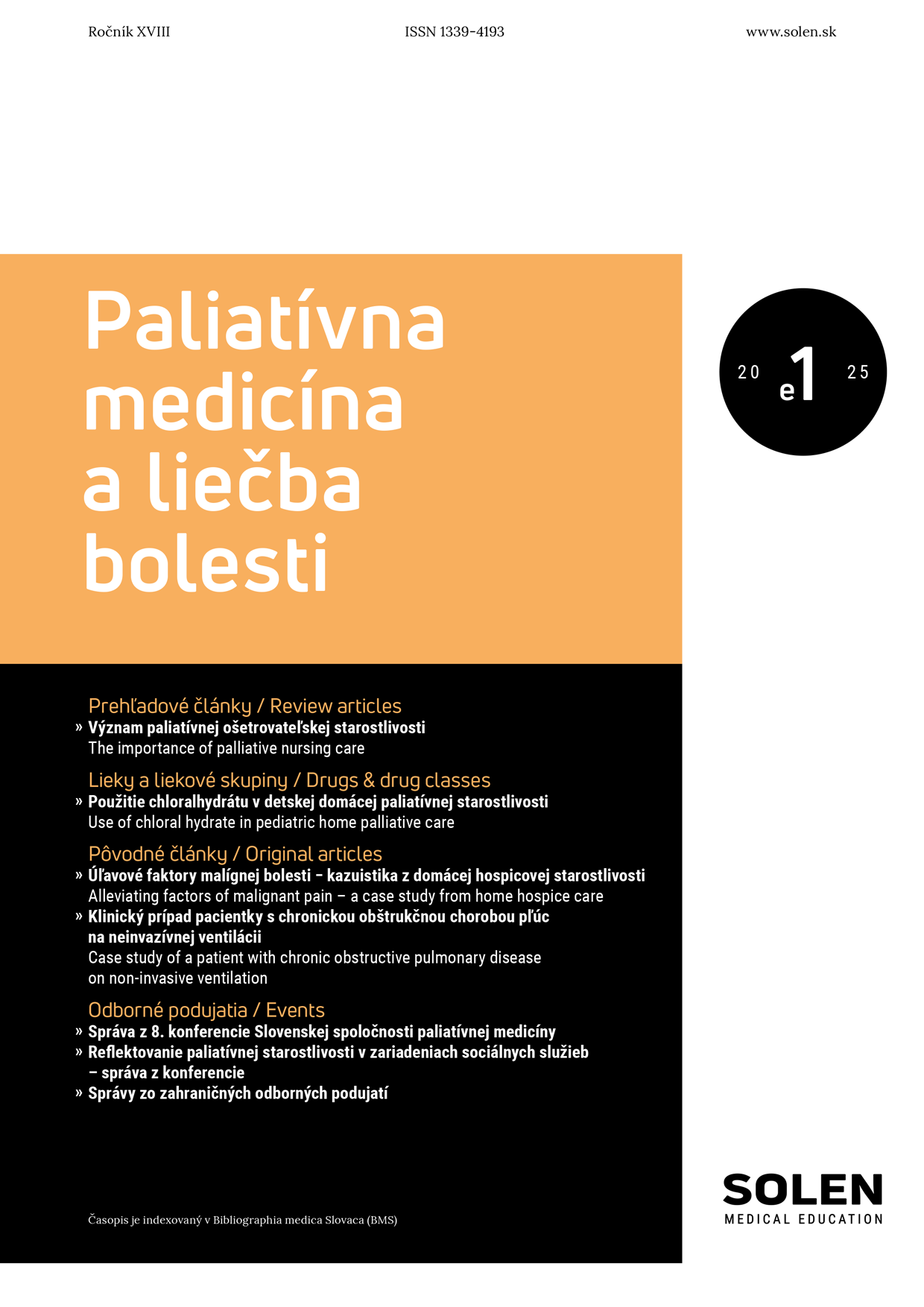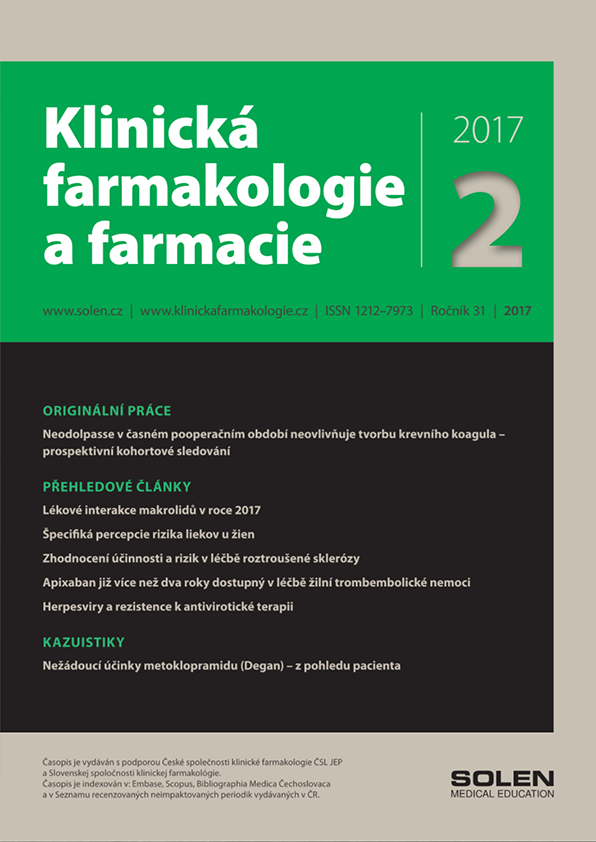Neurológia pre prax 5/2010
The present and future of recanalization therapy in acute ischaemic stroke
Intravenous thrombolysis (IVT) is currently a standard effective treatment for acute-stage ischaemic stroke. Because of the limitations of IVT which include a short therapeutic window and a relatively low efficacy (as assessed by the recanalization of the occluded artery), new therapeutic methods are investigated. Among the most promising are combined thrombolysis, sonothrombolysis and mechanical removal, e. g. with the Merci catheter (all of which are being experimentally used at centres in the Czech Republic); moreover, attempts are made to prolong the time window for treatment with IVT and to more accurately diagnose using imaging methods in acute-stage stroke (particularly MRI DWI, MRI PWI, CT angiography and perfusion CT). To further prove the true effect on the treatment of ischaemic stroke, more studies are required; however, their design is complicated by the dominant position of intravenous thrombolysis in early treatment of acute stroke (it needs to be applied within 4.5 hours of the onset of stroke provided there are no contraindications, except when occlusion of MCA or BA is confirmed where intra-arterial thrombolysis with a longer therapeutic window is also an option). Furthermore, it is necessary to demonstrate both recanalization of the occluded artery and the positive effect on the patient's consequent clinical condition. No therapeutic procedure which would be sufficiently effective, available and safe has been found; however, given the number of ongoing trials with promising early results, the future certainly is hopeful.
Keywords: thrombolysis, acute cerebral infarction, Merci catheter, sonothrombolysis.


